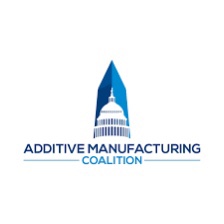Back in February (on the 4th, to be precise), the U.S. House of Representatives passed H.R. 4521, a bill that continues the questionable American tradition of using unwieldy acronyms as names for pieces of legislation. In this case, the bill’s name is the America COMPETES Act: as you surely must’ve guessed, “COMPETES” stands for “Creating Opportunities for Manufacturing, Pre-Eminence and Economic Strength.” The law touches a wide array of regulatory areas, from “financial regulations for cannabis-related businesses” to “requir[ing] the Small Business Administration to issue guidance for childcare operators.” However, the most relevant items in the bill for the 3D printing industry include:
- The provision of “funding for the domestic production of semi-conductors”
- Mention of shoring up “supply chains for critical sectors,”
- The reauthorization, establishment, and modification of “scientific research programs within the Office of Science and Technology Policy, the Department of Energy, and other federal agencies,” and “education and workforce programs with an emphasis on science, technology, engineering, and math.”
Complementing the COMPETES Act was the “United States Innovation and Competition Act of 2021 (USICA)(S. 1260).” Formerly known as the Endless Frontier Act, this legislation sponsored by Senators Chuck Schumer from New York and Todd Young from Indiana entrusts $110 billion for basic and advanced technology research over five years.
Both the America COMPETES and USICA acts are each chamber’s written legislation to compete with China. Furthermore, according to the American Action Forum, the central component in both of them is the Creating Helpful Incentives to Produce Semiconductors Act (CHIPS), a $52 billion subsidy program for private firms that build semiconductor production facilities in the US.
The America COMPETES Act passed through the U.S. Senate on March 24, 2022. Both houses of Congress approved it with strong bipartisan support, and the bill is now in reconciliation. A few days later, on April 1, the Additive Manufacturing (AM) Coalition, a 501(c)(6) (tax-exempt business association) based in Washington, D.C., sent a letter addressed to the bill’s sponsor, Democratic Congresswoman Eddie Bernice Johnson of Texas, as well as Congressman Frank D. Lucas from Oklahoma, the ranking Republican member of the House Committee on Science, Space and Technology.
The crux of the letter, which is signed by the AM Coalition’s Executive Director, L. David Cherington, is stated in the second paragraph, which reads:
“We applaud the House and Senate for continuing to move forward on these efforts to improve U.S. competitiveness and to increase investment in research, development, and workforce training. We especially commend the bipartisan approach to address these critical issues. We ask your support for improvements to two critical areas, workforce development for additive manufacturing and investment in micro and nanoscale 3D printing of electronics.”
Regarding workforce development, the letter argues that the American labor market is “considerably behind” Asia and Europe when it comes to AM. Accordingly, the Coalition advises that the government should prioritize easing the financial burden of investing in AM equipment for all colleges, universities, and general vocational training institutions that offer programs involving AM. The organization also suggests that Congress encourage and facilitate the creation of more AM-related programs at schools across the country.

Image courtesy of AM Coalition
As for micro and nanoscale 3D printing of electronics, the letter notes the severe semi-conductor shortage that started at the beginning of the pandemic––which remains one of the favorite obsessions of global policymakers. Furthermore, the AM Coalition asks Congress “fund not only traditional manufacturing technologies but also the U.S. companies who today can print electric circuits and chips (…).”
Since, as the letter also notes, the companies currently printing electric circuits and chips can’t yet do so “at the scale to solve the current shortage,” the Coalition requests explicitly that Congress set aside “at least 5% of the funding” for domestic production of semi-conductors in the COMPETES Act with the objective of “cutting edge manufacturing technologies, including [AM].”
If legacy electronics giants do indeed end up significantly increasing their adoption of AM, the semi-conductor shortage could turn out to be the singular greatest long-term catalyst driving them in that direction. While 5% may not sound like much, with the bill (in its current form) providing $50 billion in funding for the semi-conductor industry, that would amount to $2.5 billion going to semi-conductor production achieved with advanced manufacturing techniques.
In turn, a sizable chunk of that—probably the majority—would go to the AM sector. This, and the letter as a whole, in my mind, highlights the cognitive dissonance present in all the questions that still pop up along the lines of, “When will AM become a ‘real’ industry?” Regardless of how much of the semi-conductor funding ends up in AM, the answer to that question is that it already is.
The Additive Manufacturing Coalition letter is available here.
Subscribe to Our Email Newsletter
Stay up-to-date on all the latest news from the 3D printing industry and receive information and offers from third party vendors.
You May Also Like
Profiling a Construction 3D Printing Pioneer: US Army Corps of Engineers’ Megan Kreiger
The world of construction 3D printing is still so new that the true experts can probably be counted on two hands. Among them is Megan Kreiger, Portfolio Manager of Additive...
US Army Corps of Engineers Taps Lincoln Electric & Eaton for Largest 3D Printed US Civil Works Part
The Soo Locks sit on the US-Canadian border, enabling maritime travel between Lake Superior and Lake Huron, from which ships can reach the rest of the Great Lakes. Crafts carrying...
Construction 3D Printing CEO Reflects on Being Female in Construction
Natalie Wadley, CEO of ChangeMaker3D, could hear the words of her daughter sitting next to her resounding in her head. “Mum, MUM, you’ve won!” Wadley had just won the prestigious...
1Print to Commercialize 3D Printed Coastal Resilience Solutions
1Print, a company that specializes in deploying additive construction (AC) for infrastructure projects, has entered an agreement with the University of Miami (UM) to accelerate commercialization of the SEAHIVE shoreline...






























